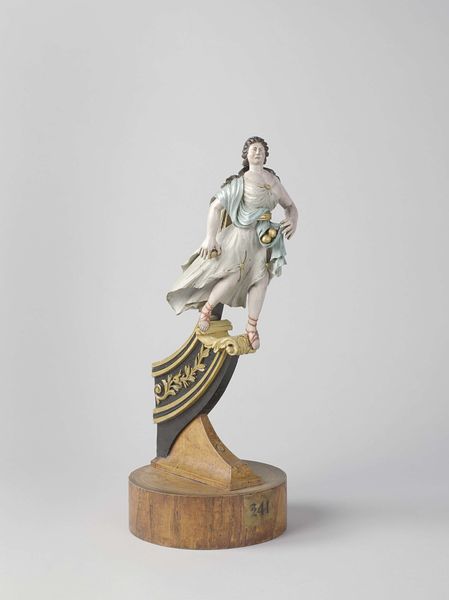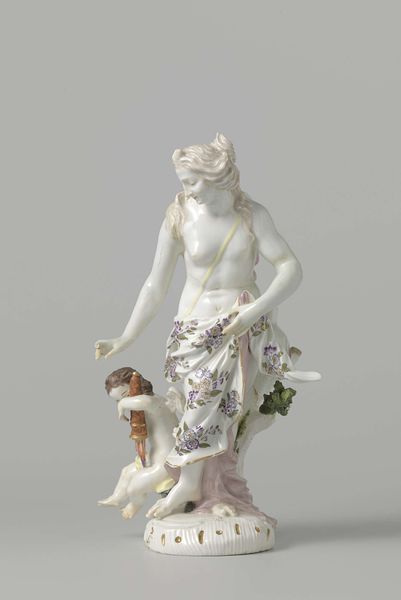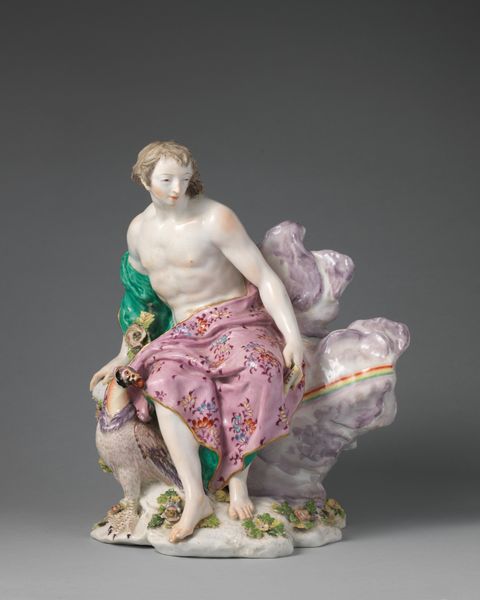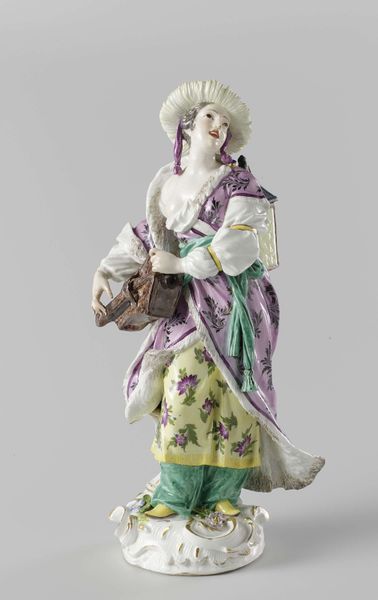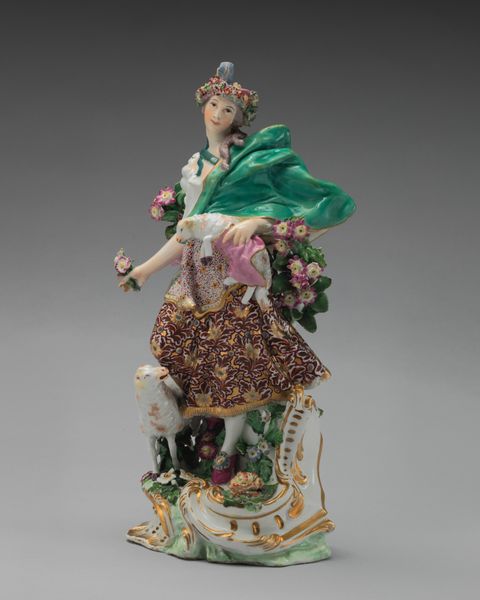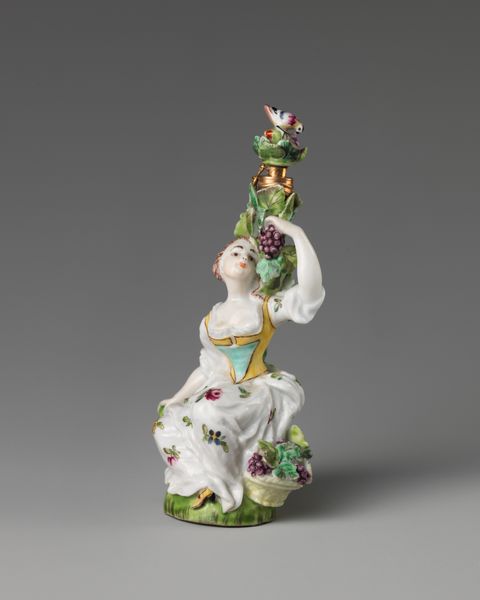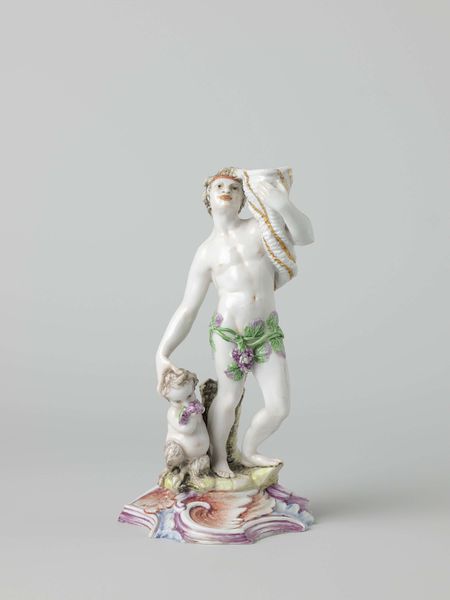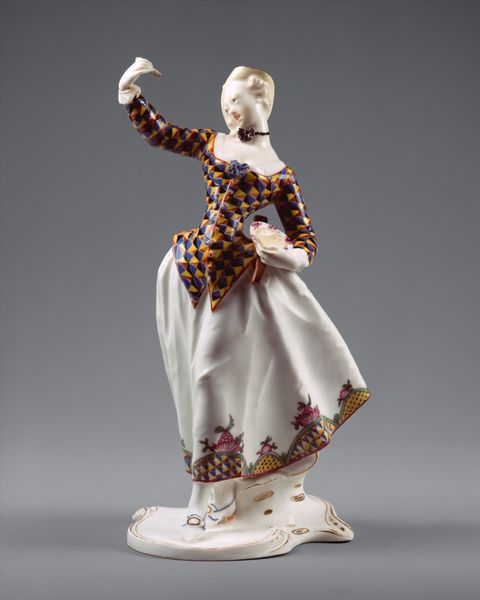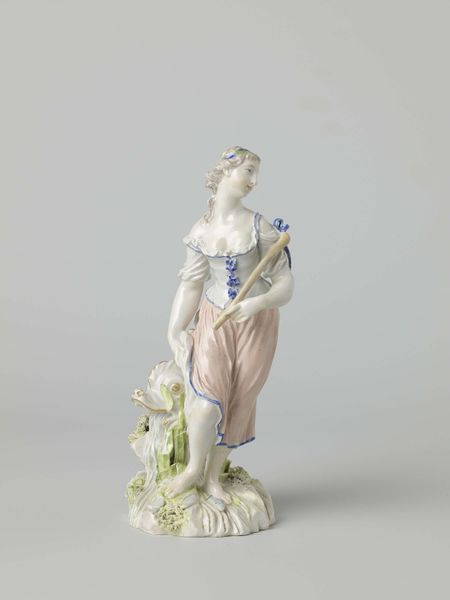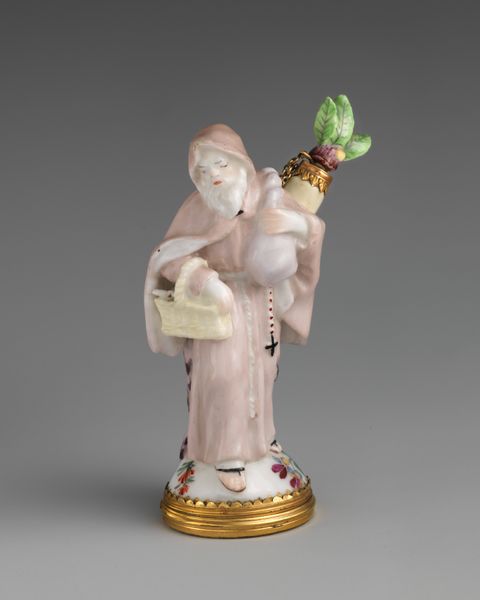
ceramic, porcelain, sculpture
#
portrait
#
sculpture
#
ceramic
#
porcelain
#
sculptural image
#
figuration
#
sculpture
#
rococo
Dimensions: height 44.9 cm, width 17.2 cm, depth 16.3 cm, width 16.2 cm, depth 15.6 cm
Copyright: Rijks Museum: Open Domain
Curator: So, what do you see when you look at these "Two Chinese Figures"? I find them so intriguing! Editor: The first word that jumps to mind is 'theatrical'. There's a sense of performance, of staged exoticism, isn't there? A real Rococo fantasy unfolding right before our eyes. Curator: Precisely! These porcelain sculptures, dating back to around 1748-1765, are currently housed at the Rijksmuseum, crafted by an anonymous artist. Look closely at the details: the flamboyance of the man's attire, the slight smirk. It’s like stepping into a play. Editor: Absolutely. It's impossible to separate these figures from the complex history of Orientalism. Their clothes, their poses - everything speaks to European fascination with and often misinterpretation of Eastern cultures. The figures’ ‘otherness’ is the main event. Curator: True. But I also wonder, what if we flip the script? Could these be seen as playful commentary on Western perceptions? Like, ‘Is this what you think we look like? Alright, here you go!’ Editor: Hmm, I see your point. The exaggerated features and dress might offer a sly subversion, a knowing wink. But I think the historical power dynamics complicate that. Who gets to do the defining, the representing, and the interpreting? It's loaded. Curator: Of course. It's not a simple equation. The delicate porcelain, the ornate base—it's all so incredibly detailed, almost painstakingly rendered. Does that level of craftsmanship deepen or perhaps distract from these concerns of representation, I wonder? Editor: I think that it heightens them, ironically. That level of meticulous detail elevates this representation and demands we confront the ideas that led to the creation of the piece, in all of its problematic beauty. Curator: It does invite you to consider how beauty itself becomes a stage for these larger discussions. Editor: A charged stage, for sure. Curator: It does make you wonder who will take to that stage next, and how their stories might play out. Editor: Well said, I guess that's something we will all need to decide.
Comments
rijksmuseum about 2 years ago
⋮
These porcelain figures were made in Meissen and mounted in Paris on gilt-bronze (ormolu) bases. The design of the bases corresponds with that of the base of the clock with the elephant also on display here. This was a way of creating a cohesive ensemble.
Join the conversation
Join millions of artists and users on Artera today and experience the ultimate creative platform.
